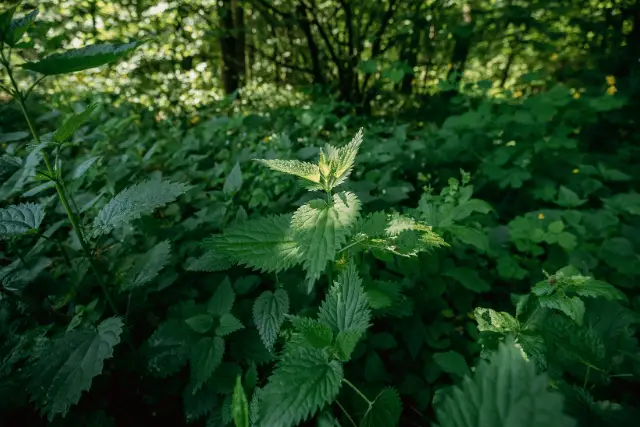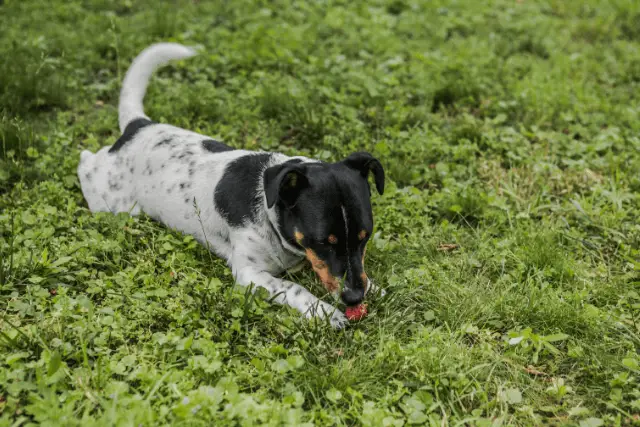Can a Dog Be Stung by Nettles? What to Know About Nettle Stings in Dogs
29.08.2023.
Walking your dog through fields and woods is one of life's simple pleasures. But those idyllic walks can take a painful turn when your pup brushes up against stinging nettles. These invasive weeds deliver an irritating sting that can leave your dog howling. Here's what you need to know about nettle stings in dogs.
The Burning Sting of Nettles
With their serrated, heart-shaped leaves and tiny greenish flowers, stinging nettles seem harmless enough. But the stems and undersides of leaves are covered in hollow, needle-like hairs.

When touched, each hair acts like a tiny hypodermic needle, injecting irritating chemicals like histamine, acetylcholine, and serotonin into the skin. For humans, the result is a painful, burning rash. Dogs experience the same stinging sensation when nettles come in contact with their skin.
Some Dogs Are at Higher Risk
While nettles can affect all dogs, those with thin coats and sensitive skin are most vulnerable. Breeds like Greyhounds, Whippets, Boxers, and Pit Bulls are more likely to be bothered by nettle stings. Puppies and senior dogs may also have stronger reactions. Dogs who trample through nettles or bite the plants out of curiosity are more likely to get stung as well.
Recognizing the Symptoms
If you wonder the easiest way to notice nettles sting on your dog, you should look for these signs:
- Localized swelling, redness, and hives at the site of the sting
- Itchy, painful welts on the face, legs, belly, or other body parts
- Excessive licking, chewing, or scratching at the irritated skin
- Rubbing their muzzle on the ground to relieve itching
- General agitation and whimpering

Your dog may also try to avoid going near areas where they encountered stinging nettles before.
RELATED: Dogs & Mosquitoes - Can They Harm Your Dog?
Diagnosing Nettle Stings
Diagnosing nettle stings in dogs is usually straightforward. The symptoms tend to appear quite rapidly after contact with the plants. Your veterinarian will identify the characteristic raised, swollen welts by doing a physical exam. They'll also check for signs of an allergic reaction, like hives, swelling, or trouble breathing.
To confirm nettle stings as the cause, vets will consider where you walk your dog and whether stinging nettles are known to grow there. Let your vet know if you've spotted nettles along your usual routes. Some dogs can also have allergic reactions to the stings, so your vet may do bloodwork to assess your dog's overall health.

Treating Stinging Nettle Injuries
In most cases, nettle stings can be treated at home. Here are some steps to take:
- Clip and gently remove nettle hairs stuck in the skin with tweezers. Wear gloves to avoid getting stung yourself.
- Wash the area with soap and cool water to help remove irritants and soothe inflamed skin.
- Apply a cold compress to reduce swelling and itching.
- Give your dog Benadryl to counteract histamine release. Follow dosage guidelines and consult your vet first.
- Apply soothing aloe vera gel or calamine lotion to the irritated skin several times a day.
- Try OTC antihistamines to relieve itching. Hydrocortisone spray can also help with swelling.
- Keep your dog from licking or scratching the sting sites to prevent infection. Consider an Elizabethan collar.
- Watch for any signs of allergic reaction or increased distress, and see the vet promptly if they appear.
For severe reactions, vets may inject antihistamines, steroids, or epinephrine under the skin to reduce swelling, itching, and inflammation. Antibiotics may be prescribed if a bacterial skin infection develops. But in most cases, the stings can be managed at home with close monitoring and TLC.

RELATED: 6 Things to Look Out For in The Woods With Your Dog
Can Dogs Eat Nettles Safely?
Stinging nettles can also pose a problem if your dog eats them. Chewing the plant won't cause stings inside the mouth since the irritants require contact with mucous membranes. However, consuming large amounts of nettles can cause gastrointestinal issues like vomiting, diarrhea, and abdominal pain.
Small ingestions generally don't cause problems. But watch for signs of GI upset, and call your vet if symptoms are severe. You may want to bring a sample of the plant your dog ate to help identify it.
What to Do if Your Dog Gets Stung
When exploring with your four-legged friend, check for nettles and steer clear of areas where they grow. If your dog accidentally gets stung, prompt first aid can help ease the irritation:
- If nettle hairs are visible in the skin, remove them with gloved hands.
- Rinse the area well with cool water.
- Apply a cold pack and Benadryl once home if swelling and itching are severe.
- Monitor your dog closely for the next 24 hours for any reaction.
- Call your vet if stings cover a large portion of the body or cause worrisome symptoms.

Stings Between the Paws
Dogs can sometimes step on nettles with unprotected paws, resulting in stings between their toes or on the pads. These sensitive areas may swell and be quite painful. Carefully check between the toes and pads after walks.
Remove any nettle hairs. Rinse the feet with cool water and apply cold compresses. Keep your dog from licking the irritated area. See the vet if swelling persists after a day or two.
Even the Most Vigilant Dog Parents Get Surprised Sometimes
Nettle stings are one of those pesky summertime nuisances that can take even the most watchful dog owners by surprise. But now that you know what to watch for and how to provide prompt relief, you and your dog can continue enjoying the great outdoors together.
A few nettle stings here and there don't have to ruin your woodland adventures. Just take steps to avoid nettles when you can, and you'll be prepared to handle the irritation if your pup has the misfortune of brushing up against these burning weeds. Stay calm, carry on, and get back to the joys of nature walks with your furry friend.
Conclusion
Stinging nettles may seem like a harmless part of the landscape, but they can deliver irritation and pain to curious canines. By familiarizing yourself with the signs of nettle stings in dogs, you can promptly identify the issue and provide relief when needed.
While nettle encounters can put a damper on your walk in the moment, a little first aid and TLC will get your dog back on their paws. Being aware of stinging nettle risks allows you to take precautions and focus on the pleasures of outdoor adventures with your furry companion by your side.
With vigilance and quick response when required, nettles don't have to curtail your meanders through meadows and forests.
World Dog Finder team







Share